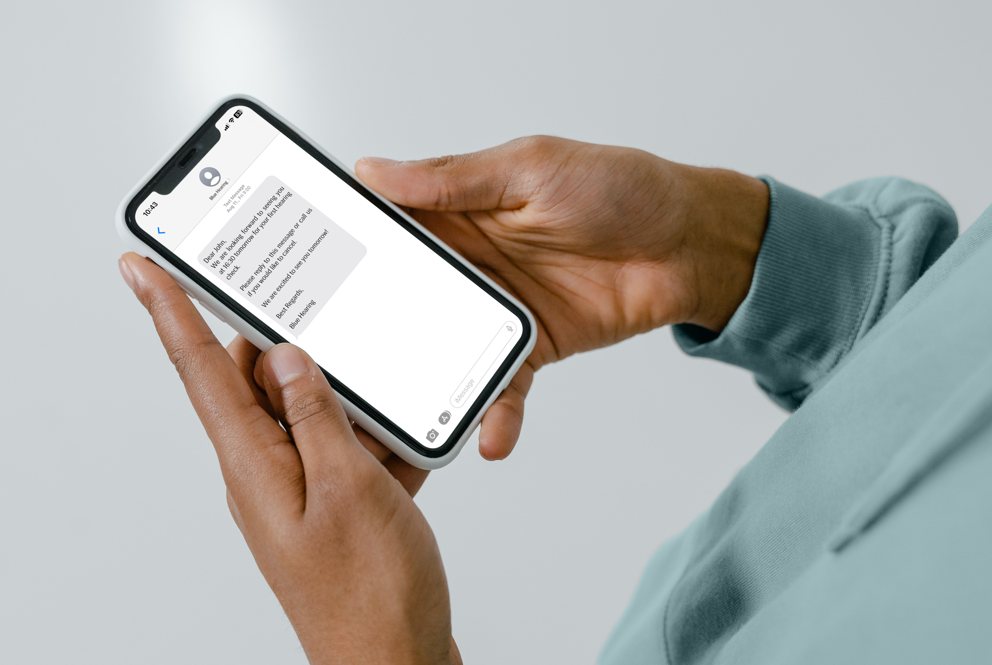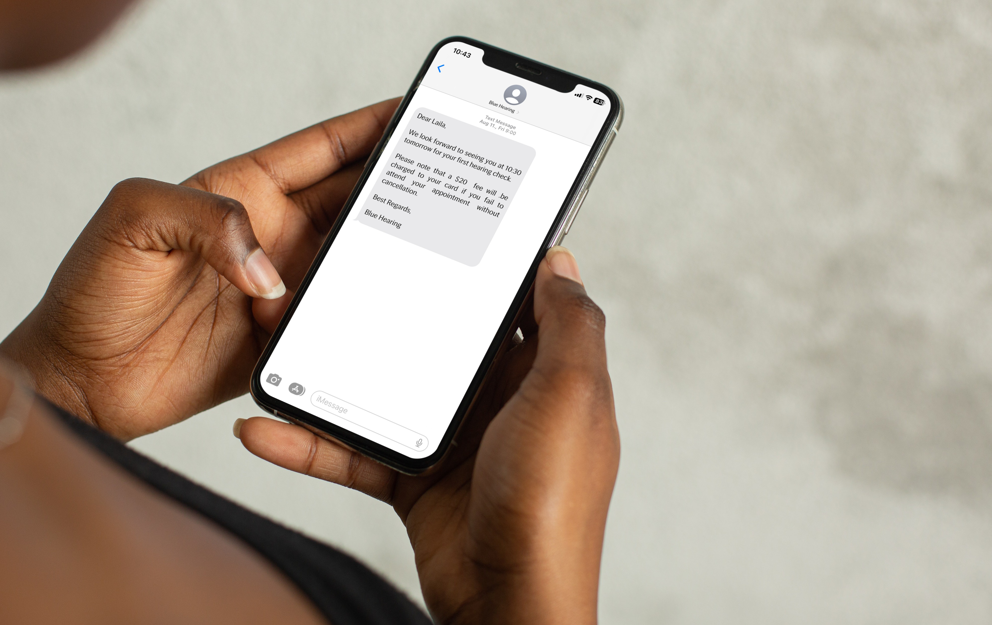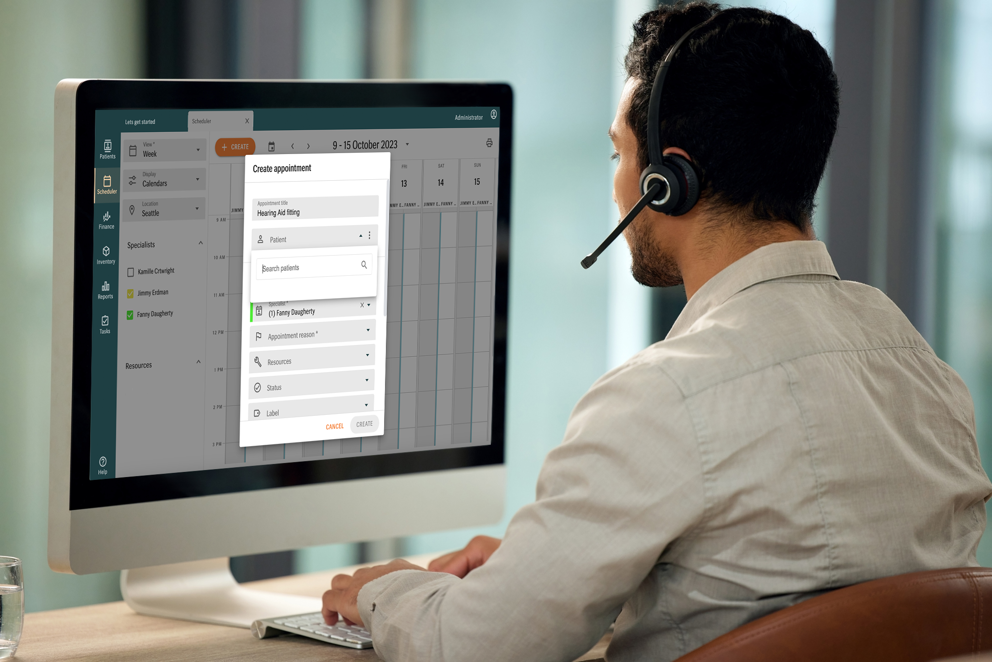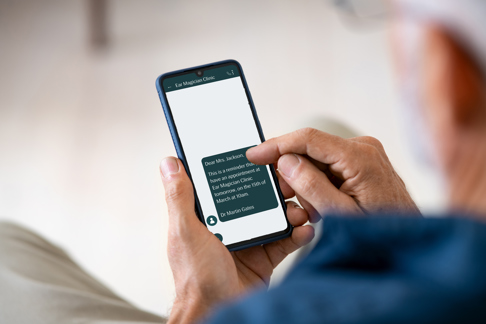
9 Proven Tips To Reduce Patient No Shows And Last-Minute Cancellations:
Have you determined how much time and money your practice loses due to missed appointments? The results may surprise you.
To calculate your no-show rate, divide the number of no-shows by the total number of weekly appointments that you schedule.
So, if your clinic typically sees 100 patients each week, and you have 20 no-shows, your no-show rate is 20 divided by 100, or 20%. For comparison, the US national average no-show rate is approximately 18%.
Below we discuss how to reduce no show appointments in your clinic.
1. Use Automated Appointment Reminders

A simple – yet effective – way to reduce patient no-show rates is to send automated appointment reminders at regular intervals leading up to each appointment. Providing quick, courteous reminders to patients will keep their upcoming appointments top-of-mind, and is a great way to engage with patients, strengthen relationships, and improve patient loyalty.
Sending out automated reminders via Practice Management Software will reduce administrative burden, while saving your clinic significant time and money over manual systems. Besides, automated appointment reminder software allows hearing clinics to quickly and easily touch base with customers about upcoming appointments via automated text reminders and emails.
2. Use Multiple Reminder Methods

When patients initially schedule their appointments, ask them which methods of contact they prefer: calling, emailing, or texting. Keep in mind that SMS appointment reminders can be an extremely effective way to reach people, so try to incorporate text reminders as often as possible. Studies show that 95% of texts are read and responded to within three minutes. If patients prefer to receive emails, use your Practice Management Software to send automated email reminders. Ideally, use a combination approach (calls, texts, emails) to keep the upcoming appointment top-of-mind for each patient.
3. Reduce The Time Between Scheduling And The Appointment

Patients are more likely to remember their appointments – and show up for them – if you reduce the time between making the appointment and the actual appointment date. Research suggests that no-show rates could be reduced by providing more same-day or next-day appointments. In fact, same-day appointments accounted for just 2% of no-shows. In contrast, appointments booked 15 days or more in advance resulted in nearly a third of no-shows.
Canadian studies have found that no-show rates increase the further in advance clinics book patient appointments. The longer people wait between booking their appointment and the actual appointment date, the more likely it is that they’ll become busy with other obligations, or they’ll forget.
4. Allow Patients To Self-Schedule

More than two-thirds of patients (67%) prefer appointment self-scheduling. Keep that in mind since digital patient engagement can dramatically increase show-up rates. When patients can choose a time that works best for them, they’ll be more likely to keep their appointments. Self-scheduling also allows patients to schedule appointments at their convenience, which may be outside of normal business hours. This can be valuable for professionals and people with busy schedules.
5. Reassure Nervous Customers

Another way to reduce no-show rates is to reassure your patients and address their fears. Fear can increase patient no-show rates, since patients may have anxiety about the examination, potentially bad test results, upsetting diagnoses, and/or uncomfortable procedures. Often, people may resist getting a hearing screening – even if they know they aren’t hearing properly – because they don’t want hearing aids. Unfortunately, there’s still a stigma around hearing loss and hearing aids, as some people worry that hearing aids will make them look old, weak, or even stupid.
Other common concerns are that hearing aids will be uncomfortable or unattractive. Patients might be concerned about the perceived hassle of caring for the hearing aids or be anxious about the cost. Your staff should reassure them through every step of the patient journey. Listen to patients’ concerns and address them honestly and compassionately, without judgment. Building trust – and strong relationships with your patients – can help increase key performance indicators (KPIs) like show-up rates, sales, and customer loyalty.
6.Create An Official “No Show” Policy

Have a formal, written no show policy, and be sure each patient reads and signs the policy along with the other new patient paperwork at their first visit. Promote the policy with in-office signage, on your website and social media platforms, and via email and text appointment reminders. Communicate the policy clearly, so no one can claim they didn't know the ramifications of missing their appointment.
It's common to allow each patient one missed appointment without penalty, but then charge a fee for any subsequent no shows. Some hearing practices will charge a nominal fee of $25-30, while others charge the full or partial cost of the appointment. Most hearing practices make exceptions for illness, inclement weather, and/or emergencies.
7. Minimize Wait Times

Your patients are busy, and if you force them to wait 30 minutes or more for their hearing appointment, they may opt to skip future appointments. If patients believe you don’t value their time, they’re less likely to value yours. Furthermore, if your clinic habitually keeps patients waiting, your no shows can easily turn into lost patients. In fact, 89 percent of people began purchasing from a competitor following a poor experience. Use a PMS to optimize your schedule, keep clinicians on track, and minimize wait time for your patients.
8. Strengthen Relationships With Patients

Your clinic has opportunities to build strong relationships with your patients all throughout the year. Send birthday and holiday wishes. Offer valuable information through your website and social media platforms. Periodically send news about your practice, such as a new audiologist joining your staff, a new location opening, or innovative new hearing aid technologies. Use your Practice Management Software (PMS) to jot notes about each patient’s family, hobbies, interests, etc. so you can mention these details at future appointments. When patients feel valued, and believe that you’re interested in them as a person – not just a pair of ears – it can help increase show up rates, as well as patient satisfaction and loyalty. Happy, loyal customers will be more likely to attend their appointments.
9. Reschedule No Shows Immediately

If, despite your best efforts, a patient still misses their appointment, reach out to them to check on them and reschedule their appointment immediately. Showing concern about their well-being can help strengthen your clinic’s relationship with the patient and will make them less likely to skip their next appointment. Don’t wait for the patient to call you to reschedule – especially since they might feel awkward or embarrassed about being a no-show. Keep the conversation friendly so you don’t make the patient feel bad about missing their appointment. Also, don’t mention the no-show fee if you want to get the patient to come back to your clinic. Wait until you see them in person at their next appointment before discussing the fee.
Other Blogs You Might Enjoy:

Exploring the Double Standard of Hearing Aids and Glasses
Why is there a stigma around wearing hearing aids, but not around wearing glasses? Eyeglasses were once a sign of age and impairment – remember the cruel old taunts of “four-eyes” – but are now seen as cool and trendy. Hearing aids should have a similar evolution: from stigmatizing burden to innovative, wearable tech.

The Benefits of Automated Reminders in Hearing Healthcare
Reminders are essential for hearing clinics. Auditdata’s automated reminders ensure that clinicians don’t skip important steps in their treatment. Our solutions also remind customers to make (and keep) hearing appointments and take proper care of their hearing aids.

6 Marketing Challenges That Can Derail The Success Of Your Hearing Clinic
Marketing is an essential business function to help attract attention, generate interest, drive sales, and help differentiate your business. Don’t let marketing challenges derail your success.
Don't Miss Out On the Latest Insights On Audiology
Sign up today to receive exciting updates, tips, and the latest newsletters from Auditdata.
Resources:
⭐️ Auditdata Blogs:
- Why no one wants to wear a hearing aid and what we can do to change that
- A hearing clinic’s flexibility is a key to success
⭐️ Auditdata Manage: Audiology Practice Management Software
⭐️ Born anxious: Why some of us Are wired to worry
⭐️ The Real Reason That Going to the Doctor Gives You Anxiety
⭐️ 23 Appointment Scheduling Tactics
⭐️ How can doctors reduce no-shows?